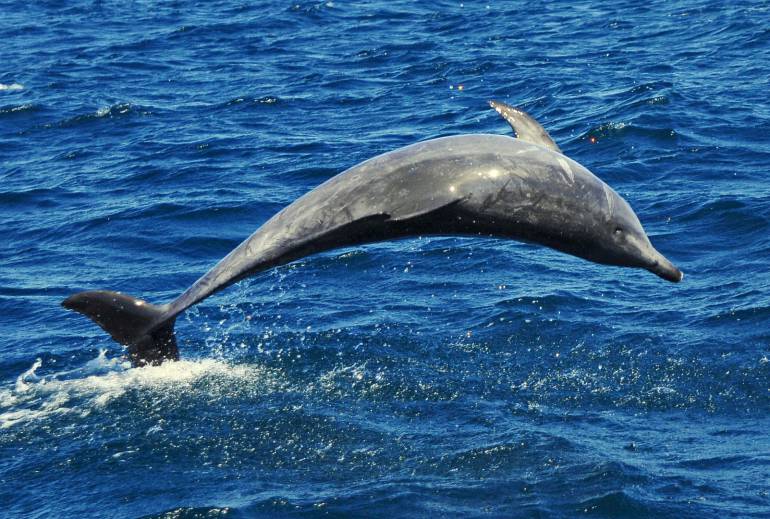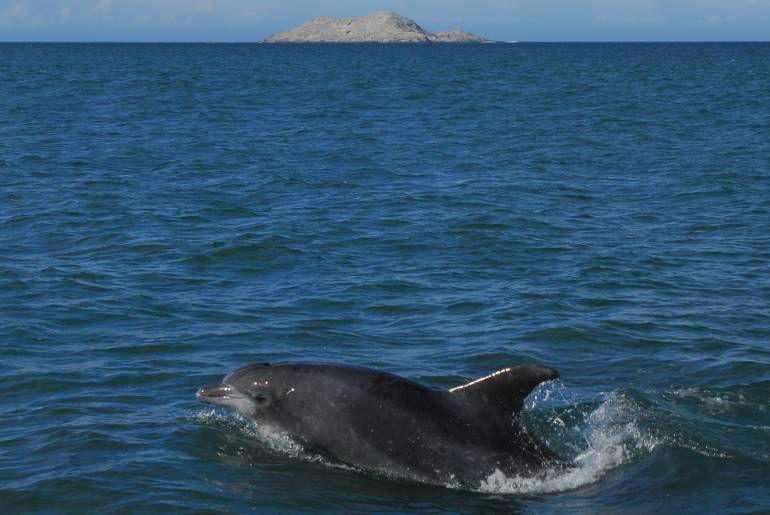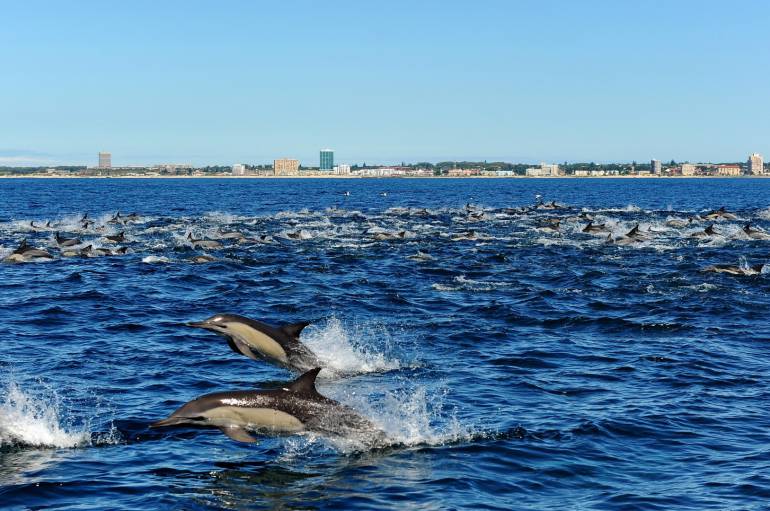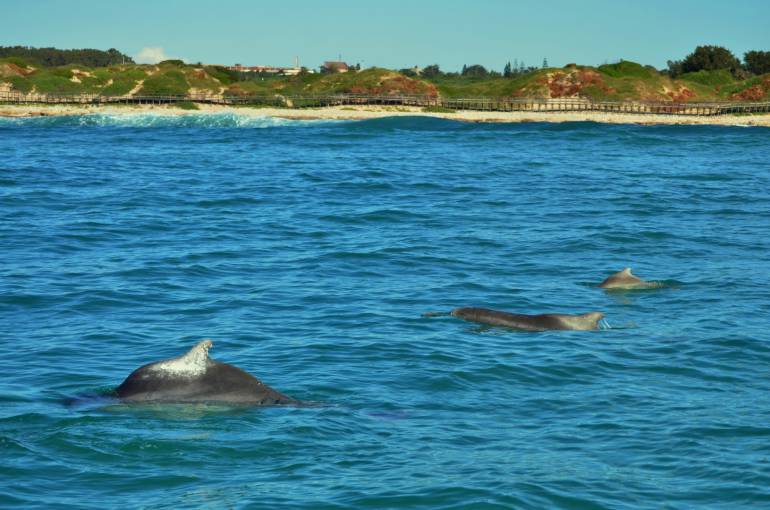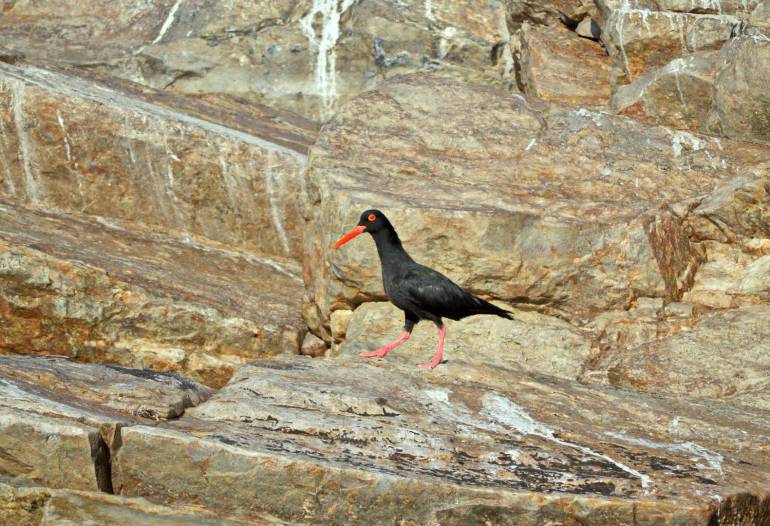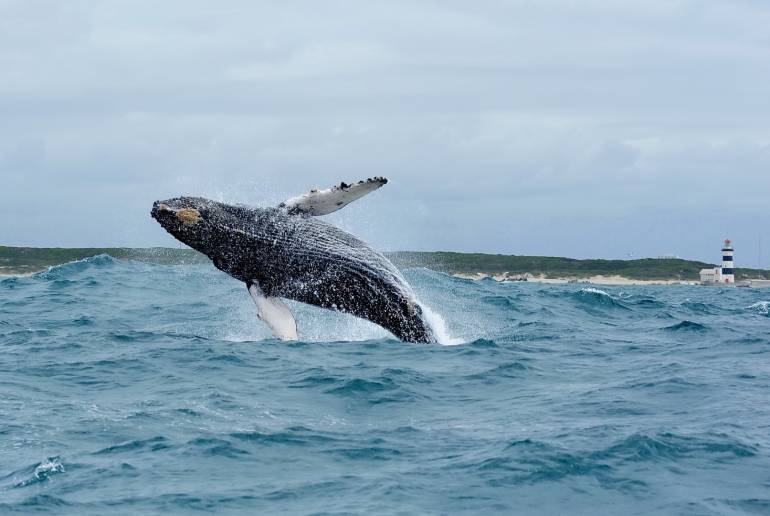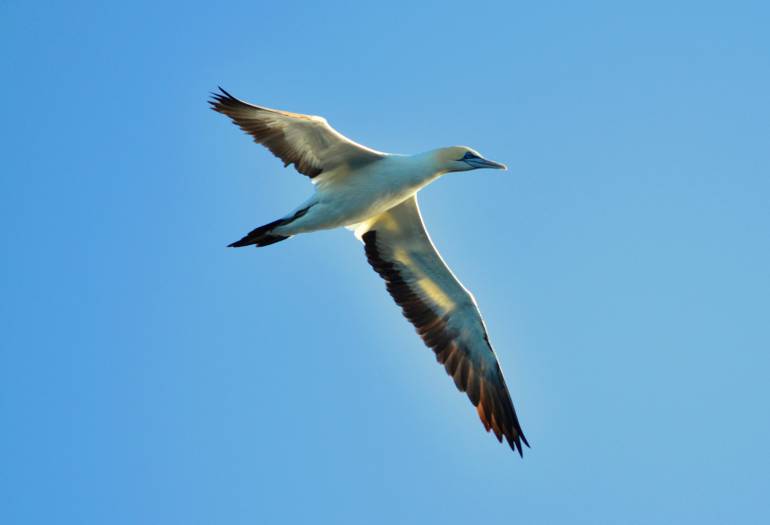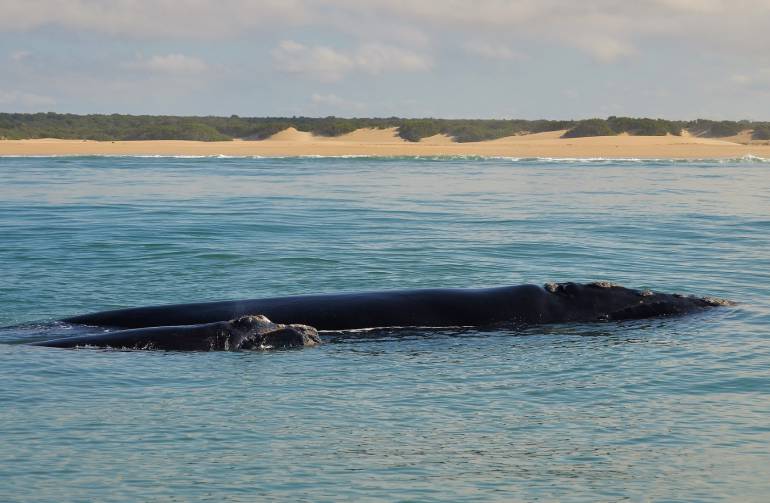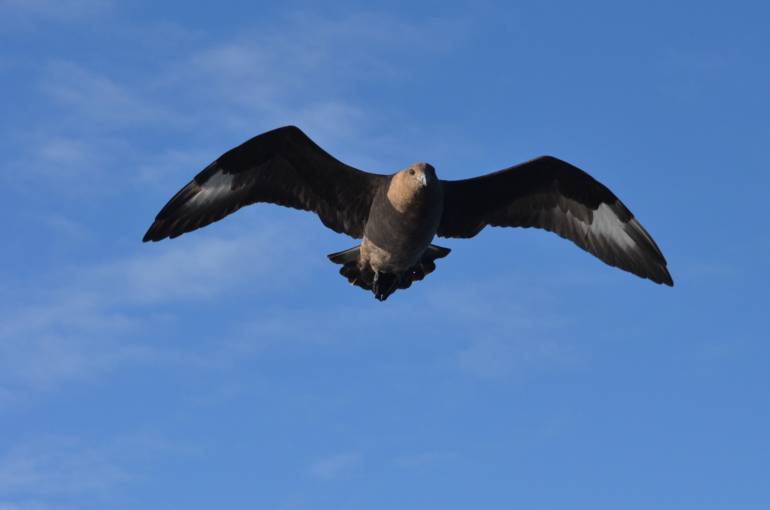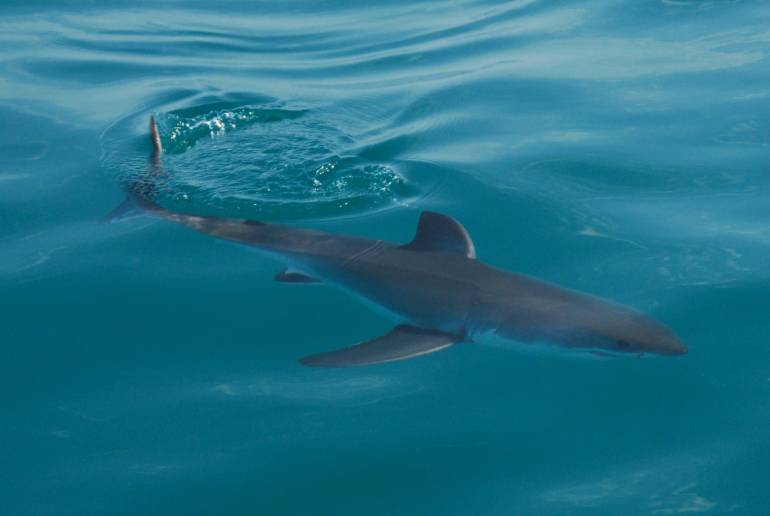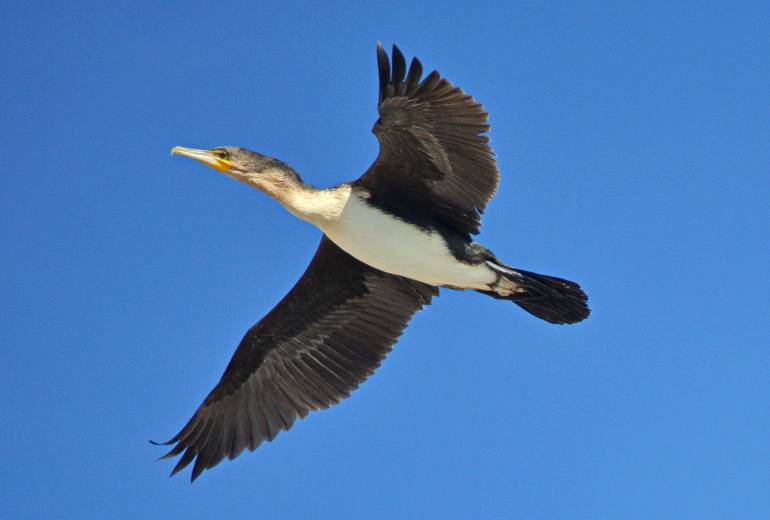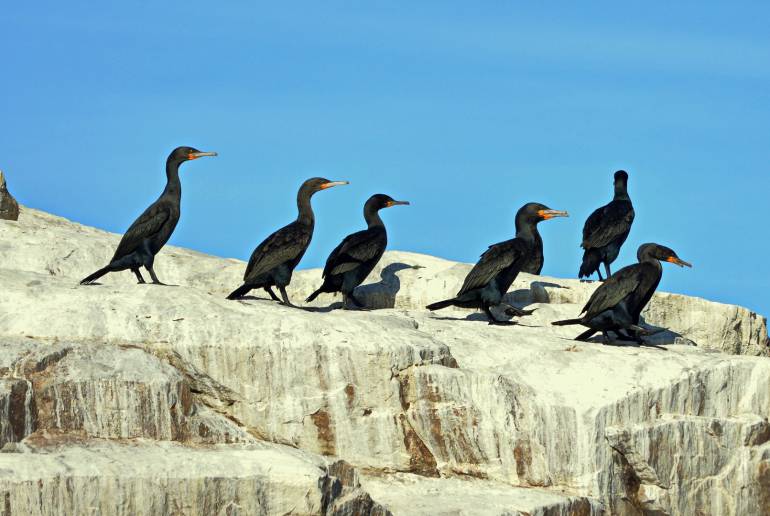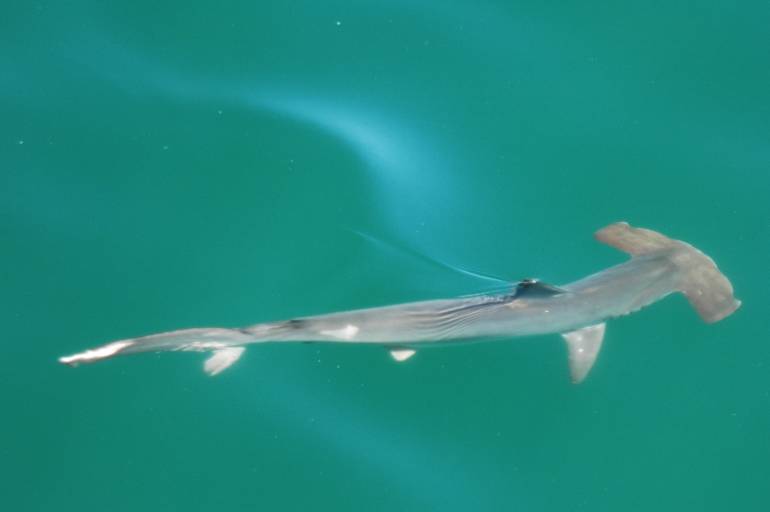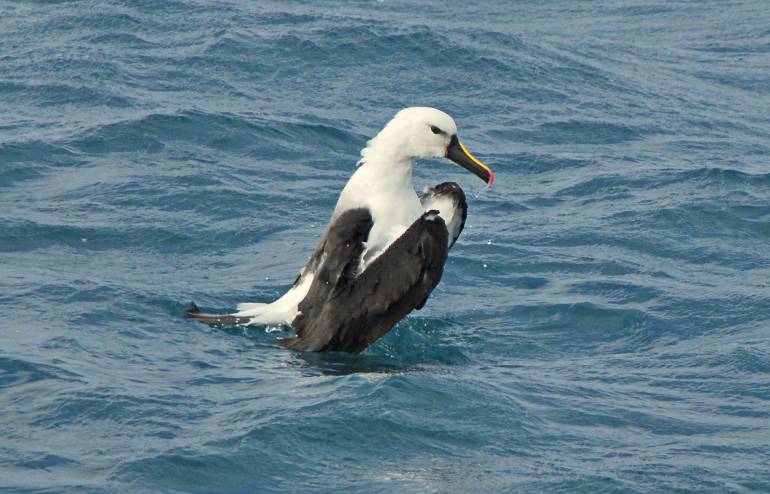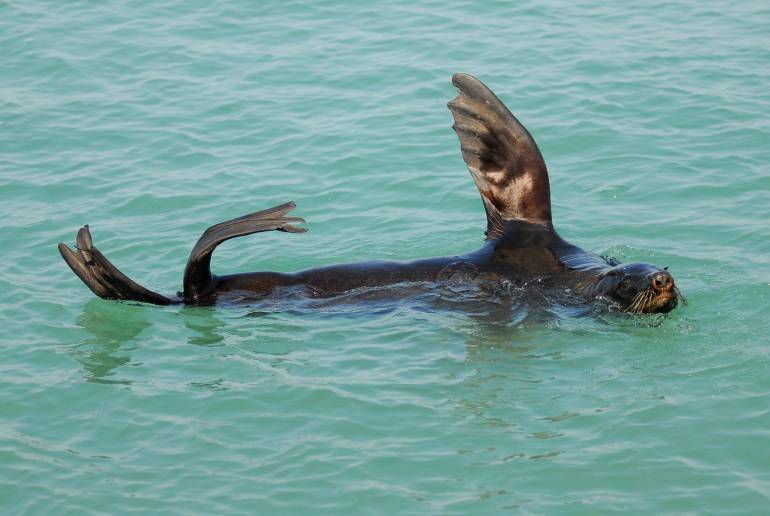Nelson Mandela Bay's rich marine biodiversity
Nelson Mandela Bay's Algoa Bay has a very rich marine biodiversity. As October is National Marine month we thought we would share some of the species found with you.
African Penguin (Spheniscus demersus)
African Penguin (Spheniscus demersus). Algoa Bay is home to the largest breeding colony of African penguins in the world as we have 22,000 living on St Croix Island. The population in our bay declined by 70% in 7 years, and the species has now become endangered, with the fear of rapid extinction if the decline continues. The decline was mostly caused by over-fishing of sardines and anchovies and we are hoping that St Croix will soon be officially declared an MPA (Marine Protected Area) which will ban commercial fishing around the islands.
Indo-Pacific Bottlenose Dolphin (Tursiops aduncus)
Indo-Pacific Bottlenose Dolphin (Tursiops aduncus). I'm sure you've all seen dolphins frolicking in the waves? Well it is probably these guys you've spotted. They are seen in our bay all year round, in shallow waters usually just behind the surf or at St Croix Island in an area we have dubbed lovers lane as they are so often seen mating here! When the males are finished mating with the females they can often be seen leaping out of the water a few times. Maybe they are showing off?
Common Bottlenose Dolphin (Tursiops truncatus)
Common Bottlenose Dolphin (Tursiops truncatus). This species is a slightly larger bottlenose dolphin, with darker colouration and a shorter beak. More commonly seen further out to sea but as usual performing for the boat with breaches and tail slaps. They have been found in pods of up to 400 individuals within the bay!
Common Dolphin (Delphinus capensis)
Common Dolphin (Delphinus capensis). Throughout the year we see these small dolphins in pods of up to 2,000. They are more commonly seen between January and July, however, as they travel along the coast looking for baitfish. These dolphins accompany the sardine run and are usually spotted swimming at top speeds (up to 60km/h), or circling balls of fish whilst feeding. They have a beautiful yellow hourglass pattern on their flanks which makes them easily recognisable!
Humpback Dolphin (Sousa chinensis)
Humpback Dolphin (Sousa chinensis). These summer visitors (although sometimes spotted in winter) can be found in Algoa Bay in shallow waters, very close inshore. Always seen in small pods of between 1 and 12 individuals, they tend to be a little shy around people and boats, possibly because there aren't so many of them. This year we had a regular pod off Pollock beach with a newborn in tow.
African Black Oystercatcher (Haematopus moquini)
African Black Oystercatcher (Haematopus moquini). Oystercatchers eat mussels, not oysters. And the proliferation of the Mediterranean mussels, although highly destructive for our indigenous molluscs, benefits the oystercatchers, an illustration of the saying “one man’s meat is another man’s poison”. After a steep decline in their populations in the 1970s, oystercatchers recovered in the 1990s-2000s, thanks to the closure of the beaches to 4x4 driving, which used to kill eggs and chicks. Adults can live up to 35 years and are usually pairing for life. Their chicks are very inconspicuous (and the cutest things ever!), which limits predation. When danger comes too close to their nests, parent oystercatchers will warn the intruder with noisy calls. Disturbance by people and dogs are still the main cause of breeding failure, so watch out when you are walking on the shores with your dogs and they warn you noisily of their distress!
Orcas or 'Killer Whales' (Orcinus orca)
Orcas or 'Killer Whales' (Orcinus orca). Although the word 'whale' is in the name they are actually the largest member of the dolphin family, at 10 metres long. Found in all the world's oceans, there are some resident pods which feed primarily on fish, however, here in South African waters we get the transient variety which mainly feed on mammals such as dolphins and seals. They are only occasional visitors to our shores, but this past year we have had some amazing sightings in #AlgoaBay. A lonely male killer whale was spotted several times between March and May, one sighting providing a hunt, as he chased down a pod of bottlenose dolphins and managed to catch one. Then back in July a whole family were spotted just off Pollock beach.
Humpback Whale (Megaptera novaeangliae)
Humpback Whale (Megaptera novaeangliae). These whales migrate to our shores every year and head up the East coast to their breeding/calving grounds. We can start to see them heading East past the bay in June and see them heading back West/South all the way until the first week of January. These whales make the longest migration of any mammal as some do a round trip of 16,000 miles. Reaching about 16 metres in length, and 30 tons in weight, these majestic creatures are often spotted breaching nearly clear of the water. There are many theories as to why whales and dolphins breach; some say it is possibly for communication, some say it is to get rid of lice/barnacles or to scratch an itch, but we like to think they are simply doing it for fun!
Cape Gannet (Morus capensis)
Cape Gannet (Morus capensis). #AlgoaBay is home to the largest breeding colony of gannets in the world with 250,000 of them breeding on Bird Island, on the other side of the bay. These beautiful birds have striking blue eyes and a pale blue bill. Plunge feeding on shoals of pelagic fish, they often reach speeds of 120km/h before hitting the water. It is flocks of these birds which tend to indicate a feeding frenzy in the water with penguins, dolphins, seals, sharks and whales all tucking in to a fishy feast.
Southern Right Whale (Eubalaena australis)
Southern Right Whale (Eubalaena australis). These whales can be seen in #AlgoaBay between Juy and November as the pregnant females will come in to the protected bay to give birth and often stay for weeks until the calf is strong enough to start swimming South. Others are usually spotted in groups as the males all take it in turns to mate with the females, as the father of her calf will be determined by whichever male produces the most sperm. They come to our warm waters to give birth because if the calves were born in the cold sub-Antarctic waters they would freeze. And because they have a 12 month gestation period, they need to mate in the same area they give birth.
Subantarctic Skua (Stercorarius antarcticus)
Subantarctic Skua (Stercorarius antarcticus). These greedy little fiends visit us during the winter months (though can be seen from April until September) and are often spotted following boats around in the hopes of finding scraps of fish. These huge birds, with beautiful brown and white colouring, are very clever and will scavenge around the islands hoping to find a lonely penguin egg or chick and are great opportunistic feeders. Although persecuted for predating penguin eggs and chicks, which of course is no good for the penguins, their numbers are not big which has led to the need for formal protection of their breeding sites further South!
Great White Shark (Carcharodon carcharias)
Great White Shark (Carcharodon carcharias). Luckily Algoa Bay is not an area known for shark attacks, so bathers can swim/surf relatively in peace. However, these fearsome and spectacular creatures can be found in the bay. Near Woody Cape there is a small island with a colony of seals, and it is around this area where Great white sharks can be found in abundance as they stick close to their prey! Though they have been known to reach lengths of 8 metres, the great whites found in Algoa Bay tend to be a bit smaller, reaching about 4 metres. The great white has some incredible adaptations; an extra sense which enables them to detect the electromagnetic field emitted by the movement of living animals, able to maintain a body temperature warmer than the surrounding water, as well as their incredible bite force (18,000 newtons for a 6.1 metre long individual). Although humans are not fond of these animals they are vital in keeping the marine ecosystem in balance!
White-breasted cormorant (Phalacrocorax lucidus)
White-breasted cormorant (Phalacrocorax lucidus). Although certainly not limited to the coast, we do find this species of cormorant out in the bay resting on rocks and islands. They are not migratory so can be found all year round, often resting on the rocks at 6 pillars and the harbour wall, and roosting on St Croix, Brenton and Jahleel Islands. They mainly eat fish, and dive in stints of up to 82 seconds. Its jaw is actually adapted to handle bottom-dwelling slow-moving fish, but it may catch faster fish that live closer to the surface! They breed year round, with peaks between January and July, and both males and females work together in rearing the chicks!
Cape cormorant (Phalacrocorax capensis)
Cape cormorant (Phalacrocorax capensis). Found nesting on St Croix Island all year round.
Hammerhead Shark (Sphyrna lewini)
Hammerhead Shark (Sphyrna lewini). Juveniles can be seen in the bay during the summer months as we have a nursery ground here for them. On one trip we saw 16 of them between the island and the harbour.
Indian Yellow-Nosed Albatross (Thalassarche carteri)
Indian Yellow-Nosed Albatross (Thalassarche carteri). A pelagic bird species that visits us during winter. They can be found a little further out to sea, often around the wild side and follow boats in hopes of getting fishy scraps.
Cape Fur Seal (Arctocephalus pusillus)
Cape Fur Seal (Arctocephalus pusillus). About 6,000 of them breeding on black rocks which is next to Bird Island, on the other side of the bay (off Woody Cape). Can often be seen during our cruises just resting at the surface with their flippers out, either warming up in winter, or cooling down in summer, as their flippers have lots of blood vessels so is the best part to regulate temperature.
Bryde’s Whale (Balaenoptera brydei)
Bryde’s Whale (Balaenoptera brydei). Bryde’s whales are found off the coast of South Africa all year round, as they breed and feed here. Although quite elusive they can be spotted feeding on balls of baitfish which is a spectacular sight. Along with dolphins, penguins, gannets, sharks, seals, game fish, and other seabirds diving. The whale will come up through the middle of it all and engulf most of the fish, leaving the stragglers for the rest.
Photos courtesy of Raggy Charters.
Categories
Featured Posts
-
Unleash the Summer: Essential Travel Hacks for Saving, Safety and Smart Packing
As the temperature rises and the days grow longer, the allure of summer travel becomes…
-

Gqeberha: Tales of Adventure and Exploration
Although this adventure quote might sound cliche and a bit overused, it’s one thing that…
-

101 Things to do in and around Nelson Mandela Bay (Port Elizabeth/Gqeberha)
With an abundance of things to see and do in and around Gqeberha (Port Elizabeth), it is…

